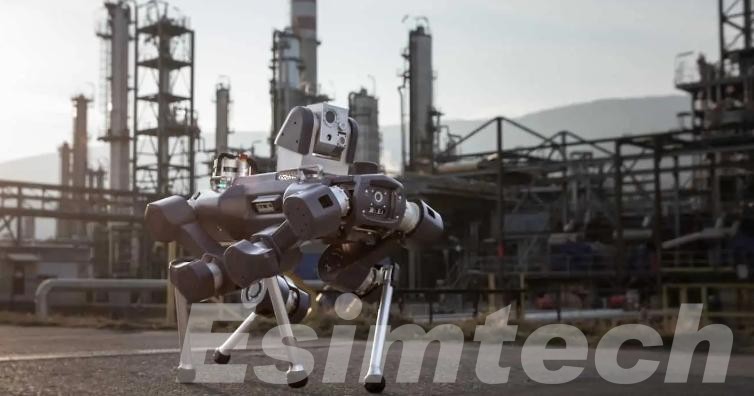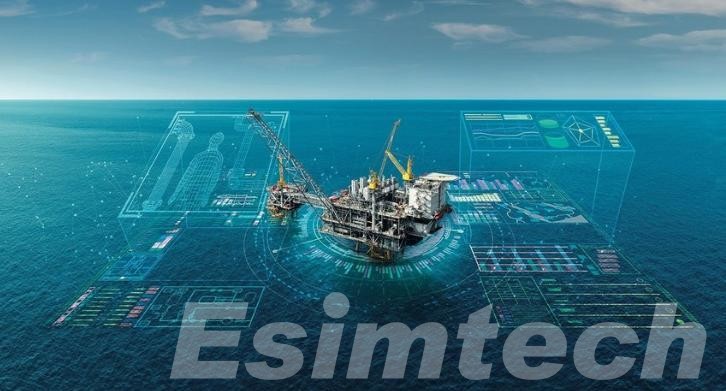The Role of Robotics in Well Intervention: Enhanced Oil Recovery
The oil and gas industry is continually evolving to address growing energy demands, environmental concerns, and the need for improved operational efficiency. Enhanced Oil Recovery (EOR) has become a vital strategy for maximizing the output of mature reservoirs approaching the end of their productive life. Among the innovations revolutionizing this sector, robotics stands out as a game-changing technology, delivering unparalleled precision, enhanced safety, and increased efficiency.
Robotics in the Oil and Gas Industry

The oil and gas industry faces numerous challenges, including high-risk environments, complex operations, and increasing pressure to improve efficiency and reduce costs. Robotics technology has become an essential solution, helping to overcome these obstacles by automating tasks, improving safety, and enhancing operational efficiency. Robots are now utilized in a variety of roles, from subsea inspections to well intervention and pipeline maintenance, reducing the need for human intervention in hazardous areas.
Key applications of robotics in the oil and gas industry include:
- Autonomous Underwater Vehicles (AUVs) and Remote Operated Vehicles (ROVs): These robots are used for inspecting offshore platforms and subsea pipelines, offering real-time monitoring and minimizing the risk to human workers.
- Drilling Automation: Robotics streamline drilling operations by automating the placement and maintenance of equipment, reducing human error, and increasing drilling precision.

- Inspection and Maintenance: Robotic arms and drones are used for equipment inspection, detecting leaks, and performing repairs in hard-to-reach locations like offshore rigs or deep wells.
- Safety and Hazard Management: Robots are deployed in hazardous conditions such as high-pressure or high-temperature wells, mitigating the risks associated with human workers.
Overall, robotics is helping the oil and gas industry to enhance operational efficiency, improve safety standards, and reduce costs, all while enabling more sustainable practices in complex environments.
Introduction to Well Intervention and Enhanced Oil Recovery
- Well intervention encompasses a range of activities carried out on oil and gas wells to maintain, repair, or optimize their production. These operations are essential for ensuring wells operate efficiently throughout their lifespan, addressing issues like equipment failures, blockages, and reservoir depletion. Typical well intervention tasks include logging, wellbore cleaning, wellbore stimulation, and equipment replacement.
- Enhanced Oil Recovery (EOR) refers to advanced techniques used to extract additional crude oil from a reservoir after the primary (natural pressure) and secondary (water or gas injection) recovery methods have been exhausted. EOR methods often involve injecting fluids such as steam, chemicals, or CO2 into the reservoir to reduce the oil’s viscosity, making it easier to extract.
Well intervention plays a pivotal role in EOR by enabling access to the wellbore for necessary maintenance and optimization tasks, as well as facilitating the application of EOR techniques. As reservoirs mature and conventional methods of extraction become less effective, well intervention coupled with EOR technologies offers a viable solution for boosting production and extending the life of aging oil fields.
Applications of Robotics in Well Intervention for EOR
Robotics has become a pivotal technology in well intervention, particularly in the context of Enhanced Oil Recovery (EOR). The integration of robotic systems into various well intervention processes significantly enhances efficiency, safety, and precision.

Here are four of the most important applications of robotics in EOR, each detailed with specific functions and benefits:
Downhole Robotics for Complex Interventions
Downhole robots, which operate directly within the wellbore, are among the most innovative tools in modern well intervention. These robots are engineered to function in extreme conditions, including high pressures, temperatures, and abrasive environments. They enable complex interventions that significantly enhance Enhanced Oil Recovery (EOR) processes.
- Autonomous Operations: Downhole robots can be deployed to carry out a variety of tasks autonomously, such as injecting chemicals or adjusting valves. In the context of EOR, these robots can precisely inject steam, CO2, or surfactants into the reservoir to stimulate oil production. With their high precision and minimal need for human oversight, they reduce the risk of human error and improve the success rates of EOR operations.
- Precision in Chemical Injection: A critical function of downhole robots is their ability to precisely inject fluids required for enhanced recovery. In techniques such as CO2 flooding or chemical flooding, these robots can deliver exact amounts of chemicals directly into the reservoir. This accuracy is essential for optimizing oil displacement and ensuring the effectiveness of EOR methods.
- Repairs and Maintenance: Downhole robots are also capable of performing small-scale repairs within the well, such as clearing blockages, replacing damaged equipment, or repairing faulty components. By eliminating the need for human personnel to enter hazardous environments, these robots reduce safety risks, minimize downtime, and help maintain continuous production.
Robotic Inspection and Monitoring of Well Integrity
Robotic systems are transforming the way wells are monitored and maintained. Traditionally, well intervention required human personnel to enter hazardous environments or depend on manual inspections, both of which are time-consuming and prone to errors. In contrast, robotics enables real-time monitoring and accurate inspections with minimal human involvement, particularly in difficult-to-reach areas of wells or subsea operations.
- Continuous Data Collection: Robots are equipped with sensors, cameras, and acoustic devices that gather critical data such as temperature, pressure, flow rates, and mechanical wear. These sensors can detect early signs of problems, such as blockages, corrosion, or equipment malfunctions, providing valuable insights for preventive maintenance and early intervention.
- Remote Monitoring: Robotic systems allow operators to remotely monitor well conditions without the need for direct human intervention, significantly improving safety. For offshore operations, ROVs (Remotely Operated Vehicles) or AUVs (Autonomous Underwater Vehicles) can perform inspections on subsea wells, assessing their condition and checking for leaks or damage.

- Real-Time Feedback for EOR Optimization: Robotics facilitates real-time data collection, allowing operators to closely monitor the effectiveness of EOR techniques like gas or chemical injection. This continuous feedback enables operators to adjust injection rates or fine-tune the placement of recovery agents, leading to more efficient reservoir management and enhanced oil recovery.
Robotic Coiled Tubing Systems for Precision Stimulation
Coiled tubing is commonly used in well interventions for tasks such as acidizing, cleaning, and chemical injection—all of which are crucial for Enhanced Oil Recovery (EOR). Robotics has greatly enhanced the precision and efficiency of coiled tubing operations, particularly when injecting fluids that boost oil recovery.
- Automated Fluid Injection: Robotic systems integrated with coiled tubing provide more precise control over fluid injection. In EOR, it is essential to inject fluids like acids or chemicals into targeted zones within the reservoir. Robotics ensures these fluids are injected exactly where needed, optimizing the intervention’s effectiveness and minimizing waste or the risk of improper fluid placement.
- Efficient Wellbore Cleaning: Coiled tubing robots are also employed to clean the wellbore by removing debris, scale, or blockages that can obstruct fluid flow. In EOR, maintaining a clean, clear wellbore is crucial for ensuring that injected fluids reach the reservoir effectively and that oil can be extracted efficiently.
- Reduced Downtime and Enhanced Safety: Automating coiled tubing systems reduces the reliance on manual labor, minimizing the risk of accidents and enhancing overall safety. Furthermore, by improving the accuracy of fluid placement, robotics reduces the likelihood of costly interventions or damage to the wellbore, leading to fewer operational delays.
Subsea Robotics for Offshore Well Intervention

Offshore oilfields pose unique challenges for EOR due to their remote location and the harsh environmental conditions. Subsea robotics, including ROVs and AUVs, are essential tools in these environments. These robots help ensure that EOR processes in offshore reservoirs are carried out efficiently and safely, even in deepwater or high-pressure conditions.
- Inspection and Maintenance of Subsea Infrastructure: ROVs are widely used to inspect subsea wells, pipelines, and other infrastructure, ensuring that all components are functioning properly. In EOR, they play a vital role in assessing the condition of subsea wellheads, valves, and flowlines, which are crucial for the injection and extraction of fluids. These robots can also perform basic maintenance tasks, such as valve manipulation or replacing seals, without the need for a crew to go offshore.
- Data Collection in Challenging Environments: AUVs are used to collect data on the reservoir’s condition by mapping the subsurface structure and measuring pressure, temperature, and fluid flow. This data is essential for optimizing injection strategies in offshore EOR projects, as it helps operators understand how the reservoir is responding to the injected fluids and make adjustments in real time.
- Reducing Human Exposure to Risk: With subsea operations often being dangerous and costly, the use of robots to conduct inspections and interventions minimizes human exposure to these risks. This not only ensures the safety of personnel but also reduces the need for costly and time-consuming offshore manned missions.
Benefits of Robotics in EOR
Robotics offers several key advantages for Enhanced Oil Recovery (EOR), revolutionizing how oil and gas companies manage and optimize reservoirs.
- Enhanced Safety: Robots perform dangerous tasks in hazardous environments, eliminating the need for human workers to operate in high-risk situations. This reduces the risk of accidents and ensures a safer working environment, particularly in remote or offshore locations where human intervention is challenging.
- Increased Efficiency: Robotic systems enhance the speed and precision of well interventions, reducing the time needed for tasks such as inspections, maintenance, and fluid injections. This efficiency allows for quicker implementation of EOR techniques, improving the overall production rate of mature reservoirs.
- Enhanced Data and Decision-Making: Robotic systems, equipped with advanced sensors and AI capabilities, provide real-time, high-quality data that supports more informed decision-making in EOR operations. Accurate monitoring optimizes the recovery process and enables more targeted, effective interventions.
- Cost Reduction: Robotics streamline well intervention processes and minimize downtime, significantly lowering operational costs. Automated systems reduce the need for labor-intensive tasks and enable more precise, cost-effective interventions, ultimately maximizing the return on investment in EOR projects.
- Environmental Benefits: Robots help minimize the risk of leaks or spills during well interventions, contributing to more environmentally responsible EOR operations. Their precision also ensures that enhanced recovery techniques are applied effectively, reducing the need for additional drilling.
In summary, robotics is transforming well interventions for Enhanced Oil Recovery (EOR) by improving precision, safety, and efficiency. With capabilities like real-time data collection, automated fluid injection, and reduced downtime, robotics optimizes EOR processes, cutting costs and enhancing recovery. As technology advances, robotics will continue to play a crucial role in maximizing oil production and ensuring more sustainable and effective energy solutions.
